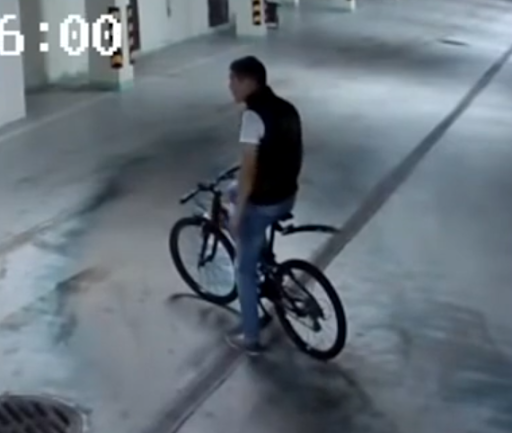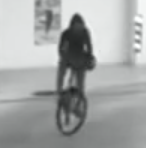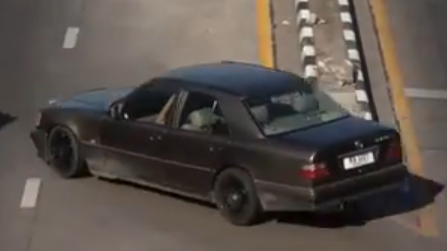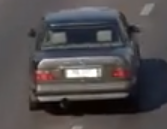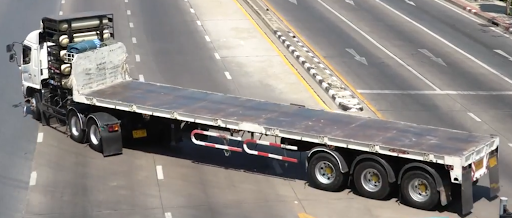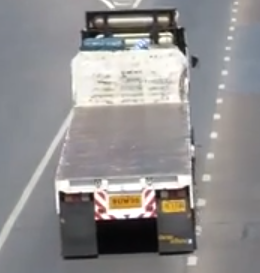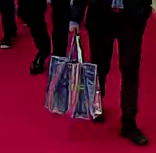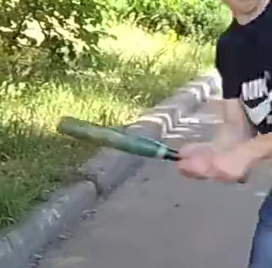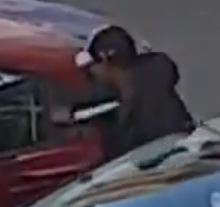Requirements and recommendations for the Search for Objects module🔗
Important
If multiple video analytics modules are used on a single camera, it should be installed and configured to meet the requirements of all modules.
For example, module A and module B are used on the camera with the following requirements:
Module A: Camera tilt angle to the plane is at least 10°; resolution is at least 1024×768; frame rate is at least 20 frames per second.
Module B: Camera tilt angle to the plane is no more than 20°; resolution is no less than 1920×1080; frame rate is no less than 6 frames per second.
In this case, the camera must be installed and configured in order to comply with the following conditions:
Camera tilt angle to the plane is from 10° to 20°; resolution is at least 1920×1080; frame rate is at least 20 frames per second.
Functional limitations🔗
Warning
After updating Eocortex from version 3.3 and lower to version 3.3 and higher, the Search for Objects module will not be able to search for objects for the period preceding the update. This is due to the database change in version 3.4.
Hardware and software🔗
Warning
Before using the neural network capabilities of the module, it is necessary to install the neural networks package.
The following is required to use this neural network module:
A processor that supports AVX instructions.
An NVIDIA video card (GPU) with a compute capability index (CUDA GPU Compute Capability) of at least 6.1 and with at least 4 GB of memory; the parameters and performance of the video card must be no lower than that of NVIDIA 10 series video cards. The video card driver version for Windows OS must be at least 572.61, and for Linux OS, at least 570.124.06.
Swap file at least half of the total RAM size.
Hint
If the package will be installed on a virtual machine, it may additionally be required to:
Enable support for AVX instructions in the guest machine settings.
Use GRID drivers for GPU virtualization.
Attention
Eocortex must use video cards selected for running neural networks in monopoly mode. It is not allowed to use such card for other applications or tasks that consume GPU resources, including for displaying video. Simultaneous use of a video card for several tasks may lead to incorrect system operation: from analytics performance degradation to server instability.
Warning
Simultaneous execution of tasks of video displaying and analysis with the Face Recognition (Complete) or Unique Visitor Counting modules working on the Eocortex Neural Networks Standard package can cause significant lags of face recognition processes when using graphics cards of GTX 10XX and GTX 16XX series with 4 GB of video memory or less. It is recommended to use dedicated graphics cards for these tasks.
Warning
The neural network works with the 64-bit version of Eocortex only.
Important
When upgrading Eocortex to another version, it is necessary to also upgrade the neural networks package to the corresponding version.
For searching only moving objects and people, the GPU is not used.
Warning
When using a video card, the stable operation of the module is guaranteed on operating systems Windows 10, Windows Server 2016, Ubuntu 20.04, as well as on the newer versions of these operating systems.
On other operating systems (Windows versions 7 and 8, Windows Server versions 2008 and 2012, Debian), issues may arise when trying to use NVIDIA graphics cards. On Windows 8, this is due to the cessation of support for NVIDIA graphics card drivers. On Debian, the problem is due to the high complexity of installing workable versions of video card drivers.
Warning
The Eocortex Neural Networks package must be installed on the video server even if a video analytics server is used. This is because the module uses PostgreSQL DBMS, which is installed together with the Eocortex Neural Networks package.
Video stream🔗
For the modes using neural networks:
Frame frequency: no lower than 3 frames per second;
Image resolution: no lower than HD (1280x720). Increasing the resolution will not detect more objects or smaller objects.
Tip
Increasing the resolution above HD will not lead to detecting smaller objects or a greater number of objects compared to HD.
Frame aspect ratio 16:9.
Warning
The accuracy of object recognition may be reduced if the frame aspect ratio is different.
Image🔗
Lighting in the frame should be uniform and constant.
If the camera is installed in front of a bright light source (the sun behind an entrance door, etc.), it is required to adjust the exposure (or brightness) to ensure that the objects in the frame have a natural color (not overexposed or darkened). In this case, it is permissible for the background to be overexposed.
The image must be in color.
Image quality should be at least average. There should be no significant compression artifacts.
White balance must be adjusted correctly.
The object must be seen from a suitable angle, at which it will be clearly distinguishable from the background and plainly visible when observed by the human eye.
For searching for people:
A strong lateral light source (sunlight from a window) is not permitted because in this case one half of the person will be overexposed and the other half will be too dark.
Scene and camera position🔗
Objects must be fully visible in the frame.
It is permitted to place the camera overhead. In this case, the angle of inclination of the camera in relation to the horizontal must not exceed 35°.
Objects must be fully visible in the frame.
The camera must be fixed securely, do not allow the camera to jiggle or wobble.
For searching for people:
People must be visible at full height.
For searching for vehicles:
Installing the camera at an angle to the axis of movement of the vehicles provides the most advantageous perspective.
Warning
It is not recommended to use PTZ cameras.
Object size🔗
To successfully detect objects in a frame, their size must correspond to the following proportions relative to the frame parameters:
People must occupy at least 2% of the width and 8% of the height of the frame.
Bags (including backpacks and suitcases) — at least 4% of the width and 9% of the height of the frame.
Passenger cars — at least 4% of the width and 4% of the height of the frame.
Trucks — at least 7% of the width and 9% of the height of the frame.
Buses — at least 5% of the width and 7% of the height of the frame.
Two-wheeled vehicles (bicycles, motorcycles) — at least 3% of width and 7% of height of the frame.
Animals — at least 4% of the width and 6% of the height of the frame.
Weapons — at least 12% of width and 12% of height of the frame.
Warning
The above requirements for object sizes as a percentage of frame size are the minimum necessary to ensure the best recognition quality under optimal conditions. If the relative sizes of objects are reduced from the required values, the module's performance for such objects will decrease.
Module performance quality🔗
Minimum requirements for searching vehicles by color:
The vehicle must be of single color, without multicolored stickers or the like.
The vehicle must be captured during daylight hours and in good weather.
The exposure and contrast on the camera must be adjusted in such a way that the color of the subject can be unambiguously determined by the human eye.
The body of the vehicle must not be light-struck by headlights or other reflections of light, including sunlight.
The angle at which the vehicle was captured must allow to correctly determine the dominant color of the object (for example, if the car is seen from behind, the bumper is painted in a dark color and the rear window is tinted, the color of the car may be detected as black).
Below are the examples of favorable and unfavorable angles for determining the type of vehicle. The better the perspective, the higher the accuracy of determining the type of a passing vehicle. On average, under good conditions, the accuracy of determining the type of vehicle is about 80%.
Favorable perspective |
Unfavorable perspective |
|---|---|
|
|
|
|
|
|
Warning
As a result of the recognition, the following objects may be incorrectly categorized as Two-wheelers:
People pictured in poor quality who may be perceived to be sitting on a two-wheeled vehicle. For example, people in the background sitting in a chair with bent arms or holding onto handrails.
Examples:



Strollers with children, people in wheelchairs and other similar combinations (person + wheel)
Examples:

The accuracy of searching for other objects significantly depends on the quality of the image, on the size of the object in the frame, as well as on the perspective from which this object is seen. Under suitable conditions, the accuracy of searching for other objects can reach 40% to 60%, depending on the degree of visibility of the object in the frame and its size (for example, a partially hidden weapon or a suitcase hidden behind a corner will be much less likely to be detected than clearly distinguishable objects of the same type). Moreover, this category of objects is characterized by a greater number of false triggerings than others.
Below are the examples of favorable and unfavorable angles for searching for other objects.
Favorable perspective |
Unfavorable perspective |
|---|---|
|
|
|
|
